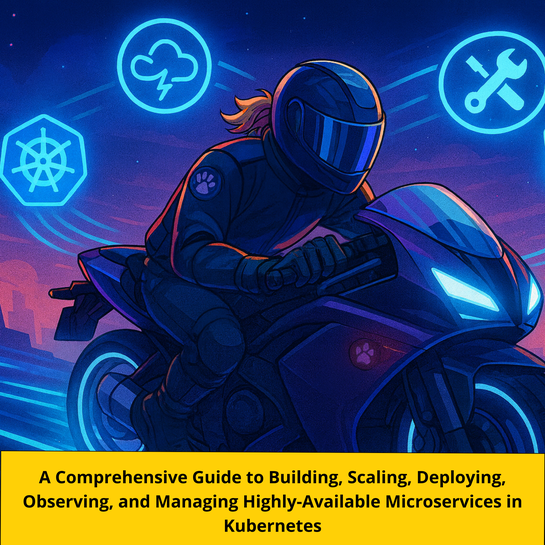Cloud-Native Microservices With Kubernetes - 2nd Edition
A Comprehensive Guide to Building, Scaling, Deploying, Observing, and Managing Highly-Available Microservices in Kubernetes
Join us
A Comprehensive Guide to Building, Scaling, Deploying, Observing, and Managing Highly-Available Microservices in Kubernetes

Struggling to switch from Prometheus to Elasticsearch without rewriting your app? This hands-on guide shows how OpenTelemetry decouples your observability backend with zero app changes. Includes working Docker-based examples and step-by-step guidance.

Hey, sign up or sign in to add a reaction to my post.
Significant releases included Jaeger v2 and Prometheus 3.0. Two projects (Dapr and cert-manager) became Graduated. New certifications for Backstage, OpenTelemetry, and Kyverno were announced...

Hey, sign up or sign in to add a reaction to my post.
This blog post explores distributed tracing, a technique for gaining deep insights into microservices architectures. It explains why traditional monitoring struggles with complex systems and how distributed tracing provides end-to-end visibility. The benefits include simplified debugging, performance optimization, and faster incident resolution.
The blog details how distributed tracing works with concepts like traces, spans, and context propagation. It also highlights observability tools like Jaeger, Zipkin, Datadog, and Dynatrace. Finally, it provides best practices for successful implementation, including end-to-end instrumentation, focus on SRE golden signals, standardization, and documentation.
In essence, the blog offers a comprehensive guide to leveraging distributed tracing for enhanced observability in microservices architectures.
Hey, sign up or sign in to add a reaction to my post.
Learn how to use go-redis client to get started with Apache Kvrocks, a distributed key-value NoSQL database.

Hey, sign up or sign in to add a reaction to my post.
OpenTeleletry Collector is an open source data collection pipeline that allows you to monitor CPU, RAM, disk, network metrics, and many more.
Collector itself does not include built-in storage or analysis capabilities, but you can export the data to Uptrace and ClickHouse, using them as a replacement for Grafana and Prometheus.
When compared to Prometheus, ClickHouse can offer small on-disk data size and better query performance when analyzing millions of timeseries.

Hey, sign up or sign in to add a reaction to my post.
This tool doesn't have a detailed description yet. If you are the administrator of this tool, please claim this page and edit it.
Hey there! 👋
I created FAUN.dev(), an effortless, straightforward way to stay updated with what's happening in the tech world.
We sift through mountains of blogs, tutorials, news, videos, and tools to bring you only the cream of the crop — so you can kick back and enjoy the best!
